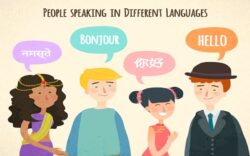In natural language processing (NLP), taxonomy, ontology, and knowledge graphs play critical roles in enabling machines to understand, categorize, and derive meaning from human language. These frameworks help structure linguistic data, provide context, and facilitate reasoning, making NLP applications more accurate and contextually aware.
- Taxonomy in Natural Language Processing
Definition: A taxonomy is a hierarchical classification system that organizes terms or concepts into categories and subcategories.
Role in NLP:
Text Categorization and Classification: Taxonomies can be used to classify text data into predefined categories. For example, news articles can be classified into categories like “Politics,” “Sports,” or “Technology.”
Named Entity Recognition (NER): Taxonomies assist in identifying and classifying named entities (e.g., people, places, organizations) in text into distinct categories. A taxonomy might categorize entities like “Person,” “Location,” “Organization,” etc.
Sentiment Analysis: By categorizing text into taxonomies of emotion or sentiment (e.g., “Positive,” “Negative,” “Neutral”), sentiment analysis can be more structured and accurate.
Example: In an e-commerce NLP system, a taxonomy might categorize product reviews into categories like “Electronics > Phones > Features > Battery Life,” allowing the system to extract specific insights based on user feedback about product attributes.
- Ontology in Natural Language Processing
Definition: Ontology in NLP defines a structured framework of concepts and their relationships, providing richer context beyond simple classifications.
Semantic Understanding: Ontologies enable NLP systems to understand the deeper meanings of words and phrases by providing a formal representation of the relationships between concepts. This helps in tasks like word-sense disambiguation (understanding the correct meaning of a word based on context).
Semantic Search and Query Expansion: In search engines, ontology-based NLP systems can understand user queries more comprehensively by expanding the search to related concepts. For example, if someone searches for “heart disease,” the system might retrieve results related to “cardiovascular conditions” because of the ontological relationship.
Natural Language Understanding (NLU): Ontology supports NLU tasks by allowing the system to capture relationships such as “is a type of” or “is related to.” For example, an NLP system processing medical literature can use an ontology to recognize that “diabetes” is a type of “chronic disease” and related to “insulin.”
Example: In a healthcare chatbot, ontology helps the system understand relationships between symptoms, treatments, and diseases, so it can provide accurate suggestions or escalate more complex cases to a healthcare professional.
- Knowledge Graph in Natural Language Processing
Definition: A knowledge graph is a data structure that represents entities (concepts, people, things) and their relationships in a graph format. It interlinks various entities in a meaningful way, forming a network of information.
Role in NLP:
Entity Linking: Knowledge graphs help NLP systems link named entities in text to real-world entities in a structured database. For example, the system can link “New York” in a sentence to the geographic entity “New York City” in the knowledge graph.
Contextual Understanding and Reasoning: Knowledge graphs enable NLP systems to perform reasoning and infer new knowledge by understanding the relationships between entities. If a document mentions “Bill Gates” and “Microsoft,” the system understands the connection between the two based on the knowledge graph.
Question Answering (QA) Systems: Knowledge graphs are heavily used in QA systems (like chatbots or search engines) to retrieve precise answers to questions. When a user asks, “Who founded Microsoft?” the system refers to a knowledge graph to retrieve the correct answer (“Bill Gates” and “Paul Allen”).
Example: Google’s Knowledge Graph is widely used in its search engine to provide structured answers to queries like “What is the capital of France?” The knowledge graph knows that “Paris” is related to the entity “France” as its capital.
Integration of Taxonomy, Ontology, and Knowledge Graph in NLP
Text Categorization and Entity Recognition:
Taxonomy: When classifying documents or recognizing entities, a taxonomy helps categorize them based on predefined groups (e.g., people, places, things).
Ontology: Adds depth by capturing the relationships between recognized entities. For instance, recognizing that “Albert Einstein” is a “Scientist” and specifically a “Physicist” based on an ontology of professions.
Knowledge Graph: Once an entity is recognized, the knowledge graph can link it to a broader context (e.g., Einstein is connected to the “Theory of Relativity” and “Nobel Prize in Physics”).
Example: In legal NLP, a taxonomy may classify documents into categories like “Contracts” or “Lawsuits,” while an ontology defines relationships between legal terms like “Plaintiff” and “Defendant,” and a knowledge graph links these terms to real-world cases and outcomes.
Question Answering and Conversational AI:
Taxonomy: Helps categorize the types of questions (e.g., factual, definition-based, or recommendation-based) in question-answering systems.
Ontology: Enhances the system’s ability to infer the correct response by understanding the relationships between concepts. For example, if asked about the symptoms of a disease, the ontology can help by understanding that “cough” and “fever” are symptoms of “flu.”
Knowledge Graph: Provides direct, structured answers by connecting the question to entities and relationships in the graph. For example, when asked, “Who directed Inception?” the system references a knowledge graph to answer “Christopher Nolan.”
Example: In a virtual assistant like Siri or Alexa, a knowledge graph helps answer complex queries by pulling together information about entities (like people, movies, locations) and linking them to each other through structured data.
Sentiment Analysis and Opinion Mining:
Taxonomy: In sentiment analysis, taxonomies categorize sentiments into positive, negative, and neutral, or finer categories like “joy,” “anger,” or “surprise.”
Ontology: Helps the system understand deeper sentiments or nuanced opinions. For example, if a product review states “the phone’s battery lasts long, but the camera is subpar,” an ontology could map these sentiments to the concepts of “battery life” (positive sentiment) and “camera quality” (negative sentiment).
Knowledge Graph: Links the extracted opinions to broader concepts. For instance, if a review mentions a “Samsung Galaxy,” the knowledge graph can place this in the context of “smartphones” and “electronics.”
Example: In social media analysis, a knowledge graph could be used to track sentiment trends over time, linking different products or topics to user feedback.
Semantic Search and Information Retrieval:
Taxonomy: Used to structure and filter search results based on predefined categories, such as “Articles,” “Books,” or “Research Papers.”
Ontology: Helps refine search results by understanding semantic relationships. For instance, if someone searches for “climate change effects,” the ontology can expand the search to include terms like “global warming” or “carbon emissions.”
Knowledge Graph: Enhances search by connecting search queries to related entities and their attributes, allowing the retrieval of precise and relevant results.
Example: In a scholarly search engine, a knowledge graph might connect an author to their publications, topics of interest, and related research fields, enhancing both accuracy and discovery.
Summary of Roles in NLP:
Taxonomy: Organizes and classifies concepts and entities into predefined categories, supporting tasks like text classification and basic entity recognition.
Ontology: Provides richer semantic relationships between concepts, supporting deeper understanding and reasoning about meaning and context in text.
Knowledge Graph: Links entities and concepts into an interconnected network, facilitating advanced tasks like entity linking, semantic search, and question answering.
Together, these frameworks help NLP systems move from basic keyword matching and text analysis to advanced, contextually aware language understanding, enhancing everything from search engines to conversational AI and sentiment analysis.
Taxonomy in natural language processing
In Natural Language Processing (NLP), taxonomy refers to the structured classification of concepts, terms, or entities into a hierarchical or categorical system. It plays a foundational role in organizing and categorizing linguistic data, enabling machines to process, understand, and retrieve information more effectively. Below, we explore the role of taxonomy in NLP and its specific applications.
Role of Taxonomy in NLP
Text Categorization and Classification:
Definition: Taxonomy is often used to classify documents, articles, or other text-based content into predefined categories. This helps in organizing content for retrieval, analysis, and processing.
Example: A news organization might classify articles into categories like “Politics,” “Economy,” “Sports,” or “Technology.” An NLP system can leverage this taxonomy to automatically tag and organize new articles into the correct category.
Named Entity Recognition (NER):
Definition: Named Entity Recognition identifies and classifies entities such as names of people, organizations, locations, dates, etc., within a text. A taxonomy of entity types allows the system to categorize entities.
Example: In a sentence like “Apple is headquartered in California,” the NLP system might use a taxonomy to classify “Apple” as an “Organization” and “California” as a “Location.” Taxonomies like “Person,” “Organization,” “Location,” and “Event” form the basis for entity classification.
Sentiment Analysis:
Definition: Taxonomy in sentiment analysis refers to the categorization of emotions or opinions extracted from text. NLP systems use taxonomies to classify text based on sentiment (e.g., positive, negative, neutral) or specific emotions (e.g., happiness, anger, sadness).
Example: In product reviews, an NLP system might classify a review as “Positive” if it mentions “great battery life” and as “Negative” if it mentions “poor customer service.” A taxonomy of sentiment labels helps in systematically categorizing these reviews.
Part-of-Speech (POS) Tagging:
Definition: POS tagging is the process of labeling words in a sentence with their corresponding part of speech, such as noun, verb, adjective, etc. A POS taxonomy defines the set of possible grammatical categories.
Example: In the sentence “She is running,” the NLP system uses a POS taxonomy to classify “She” as a “Pronoun,” “is” as a “Verb,” and “running” as a “Gerund.”
Topic Modeling and Classification:
Definition: Taxonomies help NLP systems categorize text by topic. Using a predefined set of topics, NLP models can classify text or documents under specific subject areas.
Example: In an academic database, an NLP system can classify papers into categories like “Machine Learning,” “Neuroscience,” or “Quantum Physics” based on a predefined taxonomy of academic topics.
Text Summarization:
Definition: Taxonomies play a role in text summarization by categorizing key terms and concepts that need to be included in summaries. By structuring the information hierarchically, the system can prioritize important details for inclusion.
Example: In a medical document summarization task, an NLP system might use a taxonomy to ensure that key terms like “diagnosis,” “treatment,” and “prognosis” are highlighted in the summary.
Question Answering (QA) Systems:
Definition: In question-answering systems, taxonomy helps categorize questions and map them to relevant answers. It organizes the potential topics and types of questions that the system can understand and respond to.
Example: A QA system might use a taxonomy of question types like “Definition,” “Fact,” or “How-To.” When a user asks, “What is the capital of France?” the system recognizes this as a “Fact-based” question and retrieves the answer from the category of geographic entities.
Intent Recognition in Chatbots:
Definition: Chatbots and virtual assistants use taxonomies to categorize user intents, which helps them understand and respond appropriately. These taxonomies map different possible user requests or commands to a specific action or response.
Example: In a customer service chatbot, a taxonomy of intents might include categories like “Order Status,” “Product Information,” and “Technical Support.” When a user says, “Where is my order?” the system categorizes this as an “Order Status” query.
Applications of Taxonomy in NLP
Information Retrieval: Taxonomies help organize content in search engines by categorizing results into specific categories. This ensures more accurate retrieval and ranking of relevant content based on user queries.
Document Tagging: NLP systems use taxonomies to tag documents with relevant categories, making them easier to manage, organize, and retrieve in content management systems.
Domain-Specific NLP: In specialized fields such as law, medicine, or finance, taxonomies provide structured frameworks to categorize complex terminologies and relationships between them. For instance, medical NLP uses taxonomies of diseases, symptoms, and treatments to organize medical records and research papers.
Multilingual NLP: Taxonomies facilitate language-agnostic text classification, allowing NLP systems to categorize content in different languages by relying on predefined categories that transcend language boundaries.
Taxonomy Creation in NLP
Creating a taxonomy for NLP involves several steps:
Identify Domain-Specific Categories: Taxonomies are built based on the domain or use case. For example, a taxonomy for financial documents might include categories like “Stocks,” “Investments,” and “Banking.”
Define Relationships Between Categories: Taxonomies are hierarchical, so it’s important to establish parent-child relationships between broader and more specific categories (e.g., “Technology > Artificial Intelligence > Machine Learning”).
Refine and Test: Once the taxonomy is created, it should be refined through testing with NLP models to ensure it adequately covers the concepts and categories in real-world data.
Benefits of Using Taxonomy in NLP
Improved Accuracy: Taxonomies help NLP systems classify and retrieve information more accurately by defining clear categories and relationships.
Consistency: Using a predefined taxonomy ensures that the NLP system consistently classifies similar content in the same way, reducing ambiguity.
Scalability: Taxonomies allow for scalable text processing in large datasets by providing a structured way to categorize and manage content.
Enhanced Discoverability: In applications like search engines and document management, taxonomies make it easier for users to find relevant content by categorizing data into well-defined groups.
Challenges of Using Taxonomy in NLP
Static Nature: A fixed taxonomy might not adapt well to new, emerging concepts or terms that don’t fit neatly into predefined categories, requiring constant updates.
Granularity: Striking the right balance between broad categories and detailed subcategories can be difficult, as overly complex taxonomies might lead to confusion or reduce classification accuracy.
Domain-Specific Customization: Each domain requires its own tailored taxonomy, which can be time-consuming to develop and maintain, especially for specialized fields like medicine or law.
Example of Taxonomy Use in NLP:
In legal NLP, a taxonomy might classify documents like “Contracts,” “Regulations,” and “Case Law.” An NLP system could use this taxonomy to classify and organize large volumes of legal documents, helping legal professionals retrieve the exact type of document they need.
Summary
Taxonomy in NLP is a powerful tool for organizing, categorizing, and classifying text data, making it easier for systems to process and retrieve meaningful information. By applying a hierarchical structure, taxonomies support various NLP tasks such as text classification, named entity recognition, sentiment analysis, and more. The effective use of taxonomies leads to enhanced accuracy, consistency, and scalability in natural language processing applications, though it requires careful planning and customization for each domain.
Taxonomy plays a critical role in terminology standardization by providing a structured framework to classify and organize terms, ensuring consistency and clarity across different fields, industries, and languages. In the context of terminology standardization, taxonomy helps define, organize, and categorize terms in a way that supports clear communication and mutual understanding, especially in technical or specialized domains.
Role of Taxonomy in Terminology Standardization
Organizing Terms into Categories:
Definition: A taxonomy helps in grouping related terms into hierarchical categories, making it easier to manage, retrieve, and apply these terms consistently.
Example: In the medical field, a taxonomy may organize diseases into broader categories like “Infectious Diseases,” “Genetic Disorders,” and “Cardiovascular Diseases,” with subcategories detailing specific diseases like “Malaria” or “Hypertension.”
Creating a Common Language:
Standardization requires that terms used in a particular domain be consistent and universally understood. Taxonomy supports this by providing a well-defined structure to classify terms, reducing ambiguity.
Example: In manufacturing, a taxonomy might classify materials as “Metals,” “Plastics,” and “Composites,” ensuring that all stakeholders refer to these materials consistently across documents, contracts, and communications.
Facilitating Cross-Domain and Multilingual Standardization:
A well-defined taxonomy can support the standardization of terms across different domains and languages by providing a shared classification structure that can be adapted or translated.
Example: The International Classification of Diseases (ICD) provides a taxonomy that classifies diseases globally, with translations in multiple languages, ensuring that healthcare professionals worldwide use the same terminology regardless of language.
Ensuring Consistency Across Standards:
Taxonomies are essential in ensuring consistency across various standards and documentation, particularly in industries that rely on regulatory compliance or have international stakeholders.
Example: The ISO (International Organization for Standardization) uses taxonomies to standardize terminology across various industries, such as quality management, environmental management, and health and safety.
Supporting Metadata and Tagging in Digital Systems:
In digital content management systems, taxonomies help tag and organize terms, facilitating easier retrieval and ensuring that standardized terms are consistently applied across large datasets.
Example: In a large organization, a taxonomy of project management terms like “Risk Management,” “Budgeting,” and “Scheduling” can ensure that all documents and communications use consistent terminology when tagging content.
Benefits of Taxonomy in Terminology Standardization
Clarity and Precision:
A taxonomy helps reduce ambiguity by clearly defining terms and their relationships within a domain, ensuring that the same term is used with the same meaning across contexts.
Example: In legal terminology, a taxonomy can help ensure that terms like “Contract,” “Agreement,” and “Obligation” are used consistently in all legal documents.
Improved Communication and Understanding:
By creating a standardized set of terms organized into a taxonomy, communication across different teams, departments, or regions becomes more efficient and accurate.
Example: In global trade, a taxonomy for shipping terms like “Freight,” “Cargo,” and “Bill of Lading” ensures that all stakeholders, regardless of their location, understand the terms the same way.
Enhanced Interoperability:
In technical fields like IT or healthcare, taxonomy-based standardization ensures that systems and processes that rely on these terms can communicate with each other seamlessly, improving interoperability.
Example: The use of taxonomies in software development ensures that terms like “API,” “Database,” and “Encryption” are consistently understood and applied across different software systems.
Scalability and Maintenance:
Taxonomy enables scalability by providing a framework that can be expanded as new terms are introduced. It also allows for easier updates and maintenance of terminology standards as industries evolve.
Example: In fast-evolving fields like artificial intelligence or cybersecurity, taxonomies can be expanded to accommodate new terms like “Machine Learning” or “Quantum Encryption” while maintaining consistency with existing terms.
Cross-Language Standardization:
Taxonomies help in translating standardized terms across languages, ensuring that the same concept is universally understood.
Example: The European Union’s multilingual terminology database, IATE (InterActive Terminology for Europe), uses taxonomies to ensure that legal and administrative terms are consistently translated and applied across member states.
Taxonomy Creation for Terminology Standardization
Define the Scope:
The first step in creating a taxonomy for terminology standardization is to define the domain and scope. This includes identifying the key concepts and categories that need to be standardized.
Example: For a taxonomy in the finance sector, categories like “Banking,” “Investment,” and “Taxation” would form the top-level hierarchy.
Identify Key Terms and Relationships:
Once the scope is defined, key terms within the domain are identified, along with their hierarchical relationships (e.g., parent-child relationships, synonyms, related terms).
Example: In a taxonomy for environmental science, “Renewable Energy” might be a parent category, with subcategories like “Solar Energy” and “Wind Energy.”
Consult Domain Experts:
Collaboration with domain experts ensures that the taxonomy accurately reflects the current state of the field and includes the most relevant and up-to-date terms.
Example: In a medical taxonomy, input from healthcare professionals, researchers, and regulatory bodies is essential to ensure accuracy and alignment with clinical practices.
Iterative Refinement and Testing:
The taxonomy should be continuously refined and tested to ensure it meets the needs of users and maintains consistency across different contexts.
Example: A taxonomy for product development might need to be updated regularly to reflect new innovations and changes in the industry.
Standardization Bodies and Tools:
Organizations such as ISO, ANSI, and IEEE often establish standardized taxonomies for specific industries or use cases. Using these established standards ensures broader adoption and interoperability.
Example: The ISO 704: Terminology Work – Principles and Methods provides guidelines for defining and organizing terms in a taxonomy to support international standardization.
Challenges of Using Taxonomy in Terminology Standardization
Domain Complexity:
Some domains, such as law or medicine, have highly complex terminologies, making it difficult to develop a one-size-fits-all taxonomy. The depth of detail needed for different stakeholders can make it challenging to standardize terms comprehensively.
Evolving Terminologies
New terms are constantly emerging, especially in fast-changing industries like technology. Keeping taxonomies up-to-date and relevant while maintaining consistency across older terms can be difficult.
Cross-Domain Conflicts:
Different domains may use the same terms with different meanings, leading to conflicts in standardization efforts. This is particularly relevant in multidisciplinary fields where overlapping terminologies exist.
Example: The term “model” could mean a financial forecasting tool in finance, a predictive algorithm in machine learning, or a physical prototype in engineering.
Cultural and Linguistic Variations:
When creating taxonomies for global use, cultural and linguistic differences may lead to variations in term usage, posing challenges in standardization across languages and regions.
Example: Taxonomy in Terminology Standardization for Healthcare
In healthcare, terminology standardization is critical for ensuring accurate communication between healthcare providers, patients, regulatory bodies, and research institutions. Taxonomies like the SNOMED CT (Systematized Nomenclature of Medicine – Clinical Terms) help organize clinical terms into a hierarchical structure, ensuring that terms for diseases, symptoms, procedures, and treatments are consistently used worldwide.
Top-Level Categories: “Diseases,” “Symptoms,” “Medical Procedures”
Subcategories: Under “Diseases,” subcategories might include “Infectious Diseases” and “Chronic Diseases.” Under “Medical Procedures,” subcategories might include “Surgical Procedures” and “Diagnostic Tests.”
This standardized taxonomy supports interoperability between healthcare systems and ensures that terms used in medical records, billing systems, and research papers are universally understood and applied.
Conclusion
In terminology standardization, taxonomy is essential for organizing and classifying terms into a consistent, structured hierarchy. It facilitates clear communication, consistency, and interoperability across domains, industries, and languages. By defining relationships between terms and categorizing them within a structured framework, taxonomy supports better collaboration, compliance, and efficiency, making it a cornerstone of any terminology standardization effort.
Mapping Regional Variants:
Introduction to Content Creation
Content creation is the art of crafting engaging and valuable material for a specific audience. It involves creating various forms of content to inform, entertain, or inspire users, typically shared through online platforms.
Definition of Content Creation
At its core, content creation is about producing and distributing content that resonates with a target audience. This can include written articles, videos, podcasts, social media posts, and more.
Evolution of Content Creation
Content creation has evolved significantly with the rise of digital media and social platforms. It has transitioned from traditional formats like print publications to a more diverse range of multimedia content across various online channels.
Importance of Content Creation
Effective content creation plays a crucial role in modern marketing strategies, helping businesses connect with their audience, build brand awareness, and drive engagement.
Role of Content in Marketing
Content is the backbone of marketing efforts, serving as a way to communicate brand messaging, attract new customers, and retain existing ones. It helps businesses establish credibility and authority in their industry.
Benefits of Quality Content
Quality content can set a brand apart from its competitors by providing value to consumers, improving SEO rankings, and fostering trust and loyalty among the target audience.
Types of Content Created
Content creators use a variety of formats to convey their message, catering to different preferences and consumption habits of their audience.
Written Content
Written content includes articles, blog posts, and website copy that provide information, insights, and storytelling in a written format.
Visual Content
Visual content like images, infographics, and videos are highly engaging and can effectively convey complex ideas or evoke emotions.
Interactive Content
Interactive content such as quizzes, polls, and interactive videos encourages audience participation and boosts engagement by offering a more immersive experience.
Content Creation Process
The content creation process involves several key stages from generating ideas to finalizing and optimizing the content before publication.
Idea Generation
Coming up with creative and relevant ideas that align with the brand’s message and resonate with the target audience.
Content Planning and Research
Developing a content strategy, conducting research, and outlining the structure and key points of the content to ensure it meets its objectives.
Content Production
Creating the content itself, whether it’s writing articles, shooting videos, recording podcasts, or designing visuals, following the planned structure and tone.
Editing and Optimization
Refining the content through editing, proofreading, and optimizing for search engines, ensuring it is error-free, engaging, and aligns with SEO best practices before publishing.
Tools and Resources for Content Creation
Content Management Systems (CMS)
Content Management Systems are like the organizational wizards of the content world. Platforms like WordPress, Wix, or Squarespace help you create, manage, and publish your content without needing a degree in rocket science.
Graphic Design Tools
From Canva to Adobe Creative Cloud, graphic design tools are the artist’s palette for creating visually stunning content. Even if your drawing skills peaked in third grade, these tools can turn your ideas into eye-catching masterpieces.
Content Creation Platforms
Content creation platforms like Hootsuite or Buffer help streamline the process of creating and scheduling content across different channels. They’re like your personal assistant for staying organized and on top of your content game.
Best Practices for Effective Content Creation
Understanding the Target Audience
Knowing your audience is like having a cheat code for content creation. Tailoring your content to their interests, preferences, and pain points can make your message resonate like a catchy tune on repeat.
Consistency in Brand Voice
Consistency is key, especially when it comes to your brand’s voice. Whether you’re witty and sarcastic or serious and informative, maintaining a consistent tone helps build brand recognition and loyalty.
Optimizing for SEO
SEO isn’t just a buzzword – it’s the secret sauce for getting your content noticed by search engines. By optimizing your content with relevant keywords, meta tags, and quality backlinks, you can climb the ranks and claim your spot in the digital limelight.
Trends in Content Creation
Video Content Dominance
Move over, static images – video content is here to steal the show. With the rise of platforms like TikTok and YouTube, video has become the reigning king of content, offering engaging and shareable experiences for audiences worldwide.
Personalized Content Experiences
One size doesn’t fit all in the world of content creation. Personalization is the name of the game, with brands leveraging data and AI to tailor content to individual preferences, creating a more intimate and impactful connection with their audience.
Measuring Success in Content Creation
Key Performance Indicators (KPIs)
KPIs are like the scorecard for your content creation efforts. Metrics like conversion rates, click-through rates, and engagement levels help you track your performance and make informed decisions to optimize your content strategy.
Analyzing Engagement Metrics
Engagement metrics like likes, shares, and comments are the applause of the digital world. By analyzing these indicators, you can gauge how well your content is resonating with your audience and make adjustments to keep them coming back for an encore.In conclusion, content creation is a dynamic and ever-evolving art form that has the potential to captivate, inform, and inspire audiences across various platforms. By staying abreast of emerging trends, utilizing effective tools, and adhering to best practices, content creators can continue to make a meaningful impact in the digital sphere. Embracing the creativity and strategic planning inherent in content creation is key to establishing a strong online presence and fostering lasting connections with target audiences.














